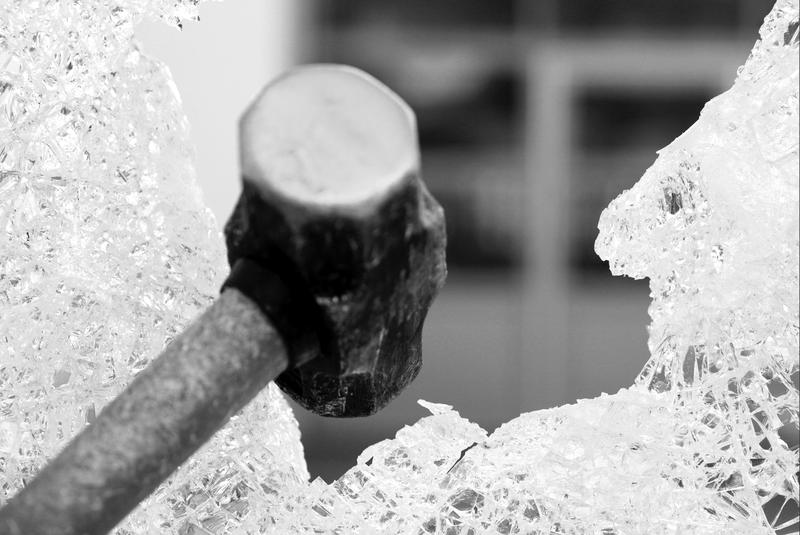
A burglary can hardly be prevented using P5A glass, because the P5A glazing breaks quickly and chinking when facing the ax and the sledgehammer of the burglars. Normal P6B glass, also called “armored glass”, can withstand for 30 seconds, while SILATEC P6B stands like a wall of glass for a total of ten minutes. The P5A glazing can at least prevent that, for example, a rock is thrown through the pane, or that a similar item drops from above into the sunroom. However, only for about five second. The European standard EN 356 does not request more. The standard divides “through throw resisting glazings” into five resistances classes - from P1A as the lowest to P5A glass as the highest class.
Burglars love RC3 windows if they are using P5A glass as the standard actually specifies. The P5A glazing is already broken in a few seconds while the RC3 window resists the attacks for about five minutes, for example, by a crowbar. This is acceptable for the standard. Only: Are there any burglars that conform to the standards? Traditional P6B glass withstand also only 30 seconds, however, SILATEC P6B glass withstands more than ten minutes, against sledgehammer or ax!
P5A glass is recommended if staircase railings are made of glass. Because even a damaged pane may still provide adequate protection against falling. P5A glazings are also recommended for sunrooms, as protections against hails or snow, but also as a roof pane above your house door. P5A glass in gyms withstands basketball throws and protects students and athletes against injuries, even if the P5A glazing breaks: because glass splinters are not distributed. However, P5A glass is hopelessly over-strained for higher risk like criminal attacks.
Far right: Burglary protection starts with the items below: The P6B, P7B or the P8B safety glass by SILATEC provides ten minutes of protection against hammering - even against a sledgehammer or an ax. Center: Conventional P6B, P7B or P8B glass, which is also called “armored glass”? 30 seconds protection against hammering - a safety risk. Left: P1A, P2A, P3A, P4A and P5A glass - also called “through throw resisting glazing”: a maximum of 15 seconds. Pleasing only for burglars.
A design simpler than the P5A glass design can hardly be found: Two glass panes will be connected with a foil. That’s all. The foil in the center is intended to keep the splinters together and to prevent injuries. For this reason, the P5A glazing receives the designation “laminated safety glass” (VSG). However, P5A glass does not provide any safety against burglary.
The P5A glazing as a single glass is in most cases 11 mm thick. To be imagined as a 2 x 4 mm float glass and a PVB foil in the middle with a thickness of 3 mm. Large P5A glass panes must be designed slightly thicker for static reasons; the foil in-between remains the same, but the float glass may have a thickness of 2 x 8 mm. Another glass pane is added for double insulating glass, in most cases at a distance of 8-16 mm. The generated intermediate space is filled with an inert gas with a heat insulating effect.
Another glass pane is added in the front for triple insulating glass; the design is identical. The P5A glazing is in this case not in the middle, but at the outside, because the heat is highest in the middle and therefore an increased breakage risk exists.
P5A glazing is available with a glass thickness of approx. 11mm. The double glazing with a thickness starting at approx. 25 mm delivers a better heat insulation, while the triple insulating glass with a thickness starting at approx. 39 mm delivers the highest heat insulation. The glass must be thicker for large panes to ensure that the static is maintained.
If the glass is dismantled, then the expert can identify through the edge whether the object is a P5A glass, because it can be identified through the glass design. When installed, then the markings and the identifiers can be found in most cases on the pane itself. For insulating glass, the note “P5A glass” can be found in some cases between the glass panes, printed on the “spacer”. Professionals sometimes use laser measuring devices, which identify the design also if the glass is installed. However, the result does not deliver an absolute certainty, because the material of the intermediate layer cannot be identified, only the thickness. (As mentioned above, P5A glass consists normally of a PVB foil with a thickness of 3 mm, which keeps two glass plates with a thickness of 4-6 mm each together.)
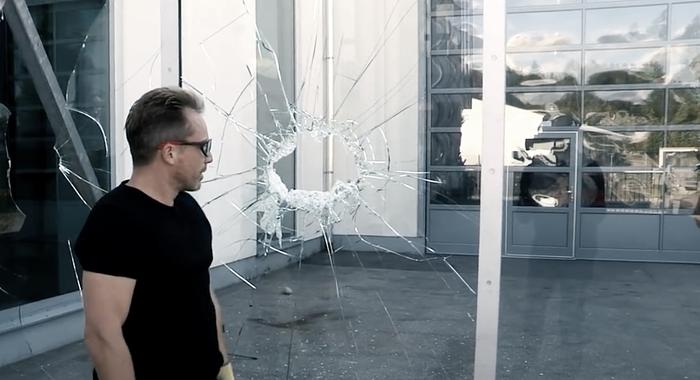
Only 15 seconds and the P5A glazing is broken. A heavy hammer does the job. Burglary protection looks different.
A steel ball is dropped nine times from a height of nine meters onto the P5A glass. The weight of this ball is 4.1 kg and the diameter is 10 cm. The impacts take place at a distance of 13 cm from each other. For this test, the P5A glazing must hold the ball, it may not fall through. However: If it falls through after five seconds, then the standard is still fulfilled and one can only hope that nobody gets injured in real life.
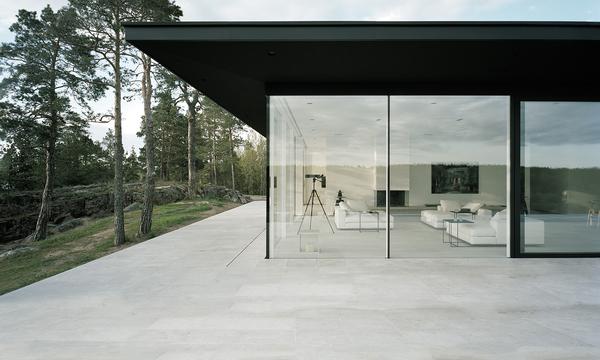
This is where you will get all the information about P6B glass
P6B glass
This is where you will get all the information about P7B glass
P7B glass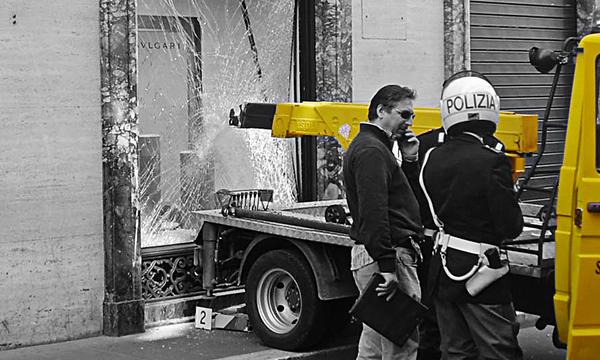
This is where you will get all the information about P8B glass
P8B glass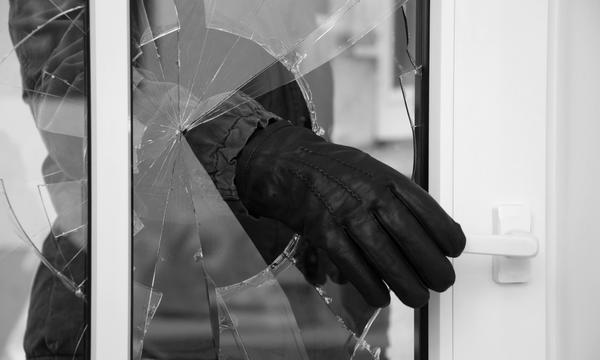
This is where you will get all the information about P2A glass
P2A glass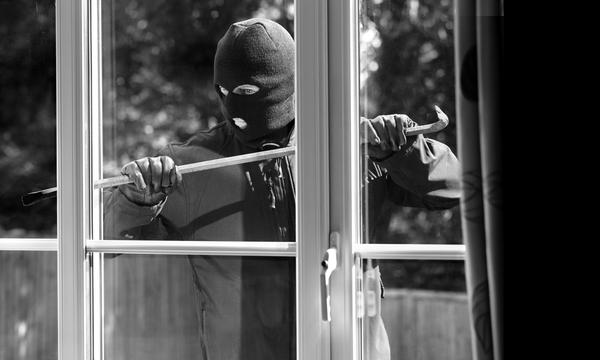
This is where you will get all the information about P4A glass
P4A glass
This is where you will get all the information about P5A glass
P5A glassYes, because the standard specifies it this way. However, this is completely quixotic: Because in a test the RC3 frame must withstand a burglar, for example, with a crowbar, for five minutes, while the glass breaks already after about 15 seconds if the burglar hits it with a hammer. Conventional P6B glass provides resistance for 30 seconds, however, SILATEC P7B glass with polycarbonate provides resistance for a total of 10 minutes! And this even against a sledgehammer or an ax.
No, at least the glass for the RC2 panic doors will be tested in the burglary test (in contrast to the test for RC2 windows). P5A glass does not pass the test. Only certified “panic glass for panic doors” may be used in RC3 escape doors, such as SILATEC RC3 panic glass starting with a thickness of 28 mm.
Yes. However, it is only a “laminated safety glass” (VSG) because it only offers safety against injuries through glass splinters. Because the splinters keep adhering to the foil in case the glass breaks. This is not the case for conventional float glass: The sharp splinters can cause severe injuries.
Monolithic (single) P5A glass costs start at approx. 150 EUR/m2. P5A glazing as double or triple insulating glass costs start at 250 to 400 Euro/m2. These are guide values for rather compact formats. The square meter prices normally increase for larger panes.
This depends on the safety requirements. The P5A glazing can effectively protect against snow and hail when used as an awning above the house entrance or as overhead glazing, for example, in the sunroom. Glass splinters can also not fall. However, effective burglary protection: only starts with SILATEC P6B glass.